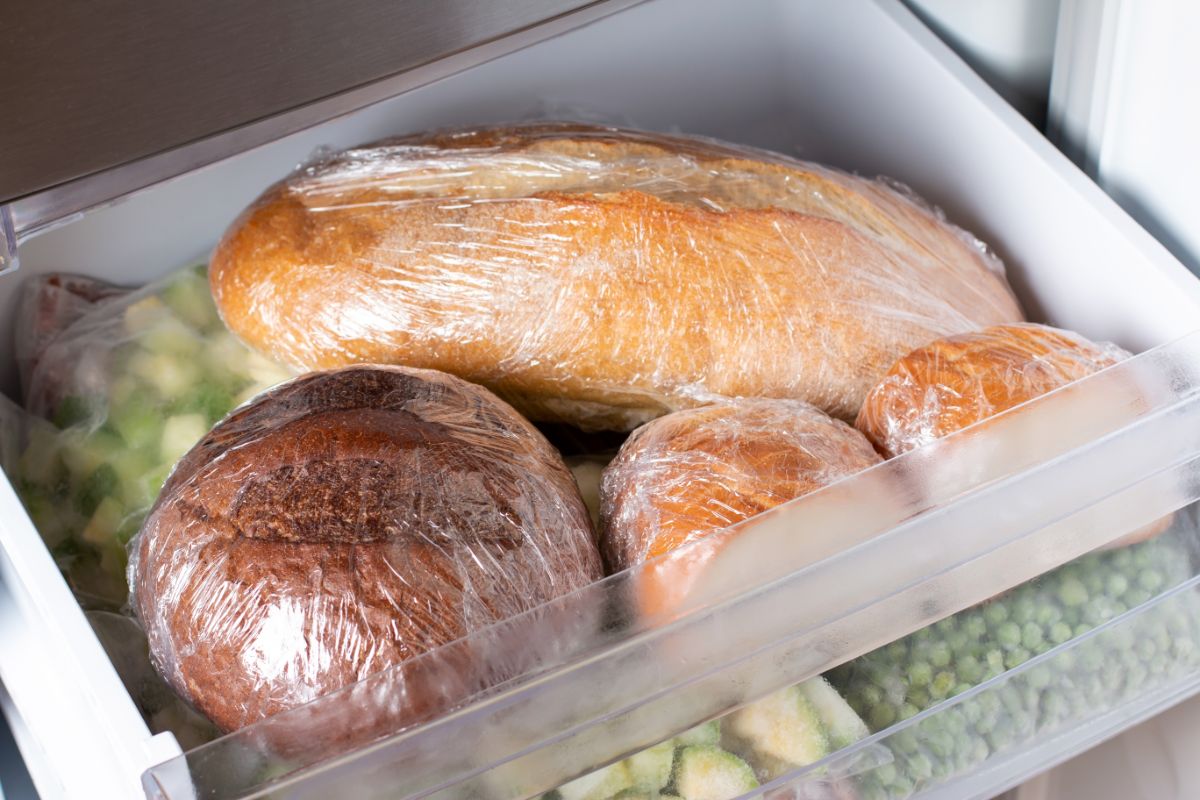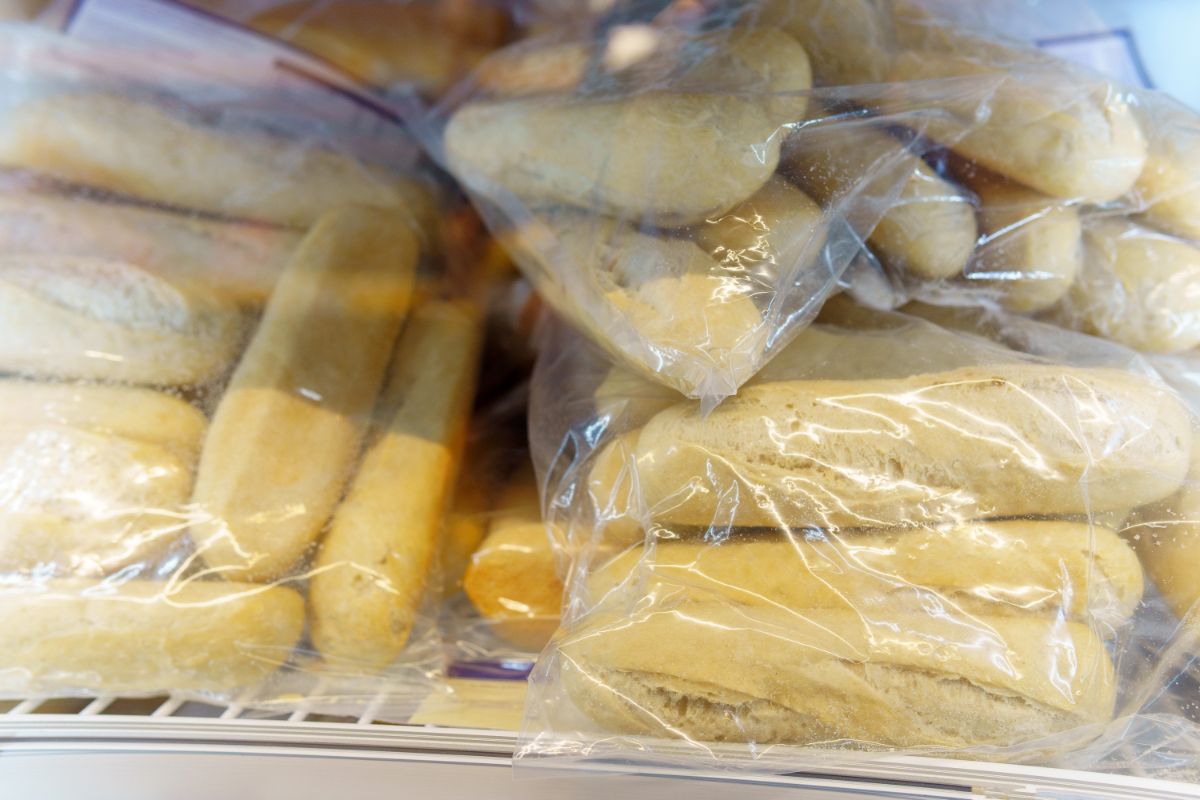There are times you unthaw that loaf of bread expecting to eat it up right away, and then life gets busy, and it just sits in the cupboard. It was a good loaf of bread and wasting it seems like a real shame, so what happens if you refreeze bread?
Will Bread Refreeze Well?

Bread taken out of the freezer and allowed to thaw can be refrozen; however, you are compromising the quality of the bread. The end product of a loaf of bread after being refrozen is it will become much drier.
Most people who have unthawed a loaf of bread and then discovered they would not be able to consume it before it goes bad to think of alternative uses for the loaf.
If you do refreeze the bread, you might want to consider it as toasting bread the next time it comes out of the freezer.
Another alternative for refrozen bread would be to turn it into garlic toast when you unthaw it a second time. You could also make bread crumbs out of the loaf and use as fillers or topping in other recipes.
Whenever you have to make a decision about refreezing a food product, you should always consider safety first.
If you find it’s safe to refreeze, you should consider quality next and decide if the loss of quality is worth refreezing and hanging on to that loaf of bread.
Why Does Frozen Bread Taste Different?
When you place a loaf of bread into the freezer, moisture is locked in the package. As a loaf of bread freezes, moisture from the bread condenses and freezes on the inside of the package.
If you defrost the bread slowly in that same package, the moisture is reabsorbed into the bread. In general, any food product will suffer some form of structural damage when it is frozen.
The water in foods forms crystals that expand and break the original structure of the food. This process is affecting the quality and taste of your bread.
The best way for you to keep the moisture levels closer to the original is to freeze bread in portions. You should have a pretty good idea of how much bread you and your family consume in a week.
Take out a portion you feel can be eaten and place in a new bag, and leave the remainder of the loaf in the freezer. You can always go back in and remove more bread from the freezer if you haven’t taken enough out.
Is Freezing Bread the Best Storage Method?

Bread is a staple in almost every kitchen or home. You can almost always find a loaf of bread in any kitchen that is ready to use in a sandwich or to butter at the dinner table.
Keeping bread on hand means there has to be a way to store it safely, so you don’t have to run to the store each time you need a new loaf.
If you bake your bread, you also need a safe way to store it as you have most likely made more than your family can consume at one time. Will freezing your bread be the best way to save it?
The refrigerator is the worst for storing bread. It can become stale faster in the refrigerator than if you leave it to sit out on the cupboard at room temperature.
Studies have been conducted on bread in a refrigerator, which found moisture is drawn out of the bread kept in there.
Your bread will become stale three times faster through a process called ‘retrogradation.’ This process causes the starch molecules to crystallize and make your bread tough.
Your best choice for keeping bread at its best is at room temperature for one to two days. After a couple of days, you should freeze it for longer-term storage.
After you thaw a loaf of bread, heat it a bit, and it will taste like fresh-baked bread again.
Aluminum foil or plastic wrap are the best choices for keeping bread’s natural moisture levels and preventing it from drying out or getting hard.
Paper wrapping is not suggested as a way of storing bread. Before wrapping your loaf, you should cut it into slices. If you have a processed loaf, leave it in the package you bought it in as they are designed to retain the moisture.
Some believe that artisan bread should be left unsliced in a paper wrapping, or even left on the counter with their cut side down.
This method of storing a loaf of artisan bread will not retain its crispiness; in fact, when left exposed to the air, it will become stale within hours.
You can keep bread at room temperature for no more than two days if you are looking to maintain a ‘fresh tasting’ bread.
The room temperature should be around 68 degrees Fahrenheit, and the bread should not be in direct sunlight. A dry, cool location is the best for bread.
If the area you live in has high humidity, you may find your bread molds quickly at room temperature. In this case, you may want to freeze your uneaten bread while it’s still fresh.
Any bread that you cannot eat within a few days should be frozen. Freezing the loaves will drop the temperature enough, so the starches in the bread will not recrystallize and make it stale.
You might want to consider cutting your loaf of bread into slices before freezing. This will enable you to remove slices as you need them without unthawing the whole loaf at one time.
To prepare the loaf, you want to use heavy-duty foil (not the lightweight household foil) or plastic bags designed as ‘freezer bags’ to wrap your bread.
Label and date your package before placing it in the freezer, so you use the older bread first, and so you remember how long it has been frozen.
Thaw your frozen bread at room temperature. Remove the wrapper and let it stand. If you like, it can be heated once for about 5 minutes to restore crustiness.
You should only reheat once after thawed because after that, you are reheating stale bread.
